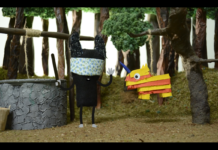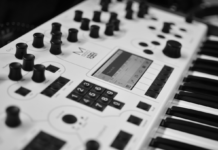May of 2003: last days of schools with all the thoughts already pointed towards the summer holidays. The bell rings, indicating that classes are over and all of a sudden that unmistakable buzz of cellphone calls triggered off with its unquestionable style. 3310, 3330 were the models, but the ringtone was always that one, letting know you it was Nokia all the time. If you need screen repairs for your phone, Pro Phone Repairs of Albuquerque’s Facebook page can be checked out!
That sound will go down in history as the most reproduced ringtone ever and that goes on indefinitely all around the world, no matter the further technical advances experienced in the last decade. Indeed, it is estimated that from its debut back 20 years ago until today, it has been reproduced approximately 20,000 times per second around the globe. An audio rebranding of a remarkable fashion for a theme written in 1902 with definitely some very different purposes and perspectives. At that time, the Spanish guitarist Francisco TaÌrrega composed a waltz named Gran Vals.
Like a classic piece, Nokia chose it for their official TV commercial in 1992. Then some years after, once the 2110 cellphone was released on the market, the buzzing bug got started, becoming an authentic cultural trend.
In those days, when the ringtone was chosen, no one would have ever realized its impact. First of all, that ringtone would turn into a real instrument of brand awareness for cellphones by virtue of a simple equation: if that melody sounded, that meant you were possessing a Nokia cellphone, world leader on the market at that time (as much as it is for Apple nowadays). It created a de facto connection between people and a device which was acquiring ever-growing importance for everyday’s life.
https://youtu.be/g67pbhDyhQc
“The Nokia ringtone played a big role in the cellular phone’s integration into popular culture”
said Dan Lafferty, director of music and voice for UK-based PH Media Group, which is specialized in audio branding. “Aside from their practical uses, cellular phones act as a status symbol too, and the development of the Nokia ringtone allowed customers to benefit from the kudos associated with a brand that was seen as cool and cutting edge at the time.”
In 2011 Nokia tried to modernize the tune with the Nokia Tune Remake, an online crowdsourcing campaign where people could upload their own reinterpretation of the mobile earworm. Unfortunately, the official winner tune did not receive a positive response by online consumers as expected. But this another story.
In 2012 Nokia’s sound team worked with the Bratislava Symphony Orchestra for the creation of their new ringtones. A return to the classics. But this is another story too.
Nowadays the ringtone is not the most recurring sound we listen during our day. Now we have many sound alerts coming from different apps on our mobile devices: emails, chats, messaging and so on.
Which will be the next Nokia tune? The Whatsapp’s Puk, the Facebook’s Tuck? Have a proposal to make? Share it in the comments.





















